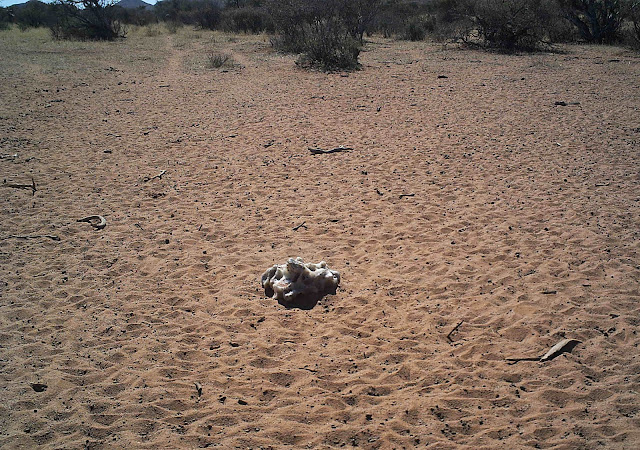I've always had a soft spot for birds in our garden but, if the truth be told, I'd rather be out camera-trapping for some of Africa's mega-fauna. But since I do have domestic responsibilities it seemed like the time to try some 'close up' camera-trapping in the garden. To get my calibrations right I thought I'd practice on the nectar-feeder with a view to getting some camera-trap images of the Sunbirds that visit it.
I thought the idea worked pretty well and within a couple of days I had, in my opinion, some fun images:
 |
| Amethyst Sunbird, Chalcomitra amethystina |
|
|
|
|
|
 |
| Malachite Sunbirds, Nectarina famosa |
|
|
 |
| Cape Weaver, Ploceus velatus |
 |
| Southern Masked Weaver, Ploceus ocularis, most way through his moult |
And that was when the trouble started...............
 |
| A Cape White-eye, Zosterops capensis, spots the first bees |
|
I presume these bees are our regular
Apis melifera capensis, known for their hardworking ethic. And so, within 10 minutes the word was out:
 |
| no more birds! |
|
....and 20 minutes later:
What's particularly alarming about this image is not just the quantity of bees but the number of drowned individuals in the bottle. How did that happen? Did they fall or were they pushed?
Within a couple of hours, by the time the liquid was all done, I'd guess there were at at least 100 dead bees in the bottle:
So now I'm really bummed. The birds have all gone and there is a dent in the local bee population - which we can ill afford.
I can easily make a design change to the feeding bottle so that the bees can't drown. But while there are bees there I know the birds will stay away. I will need to keep my distance too since these guys are pretty aggressive - all sugared-up I guess.
I'd appreciate any advice.









.JPG)






































